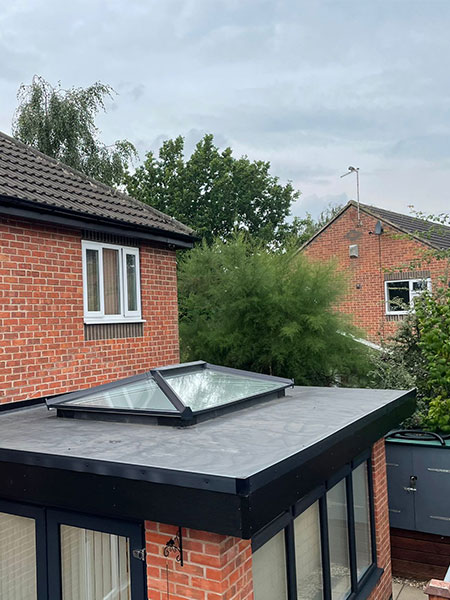EPDM is a synthetic rubber that is commonly used in the flat roofing industry. It is a high-density membrane that is highly resistant to water. This rubber is becoming increasingly popular due to its ability to withstand harsh weather conditions and a range of other benefits.
However, felt is still a commonly chosen roofing material due to its waterproof properties. It can be easily applied to any flat surface by torching, resulting in a seamless finish. Additionally, felt is frequently used as an added layer of protection underneath slate or tiles.
Although both methods are common for flat roofing, EPDM is the preferred choice due to several factors. Let’s explore these categories to better understand why EPDM is highly regarded.
Life Span & Costs
Amber Flat Roofing provides EPDM rubber that has a much longer lifespan than felt. The warranties for EPDM rubber range from 20-30 years and can last up to 50 years. Our thickest membrane of 1.5 mm EPDM rubber has the highest warranty available in the market, and our 1.2 mm EPDM rubber comes with a 20-year warranty.
Typically, felt roofs last only 10-15 years, which makes them less expensive than EPDM rubber roofs. However, it’s important to note that while felt may be cheaper initially, the overall cost is actually higher because you will need to replace the roof again within 15 year
Single sheet of membrane
EPDM rubber is shipped in accordance with the size of your roof, and it typically has few or no joints, which reduces the risk of future damage or leaks. This membrane also maintains its flexibility, making it less likely to crack. In the event of any minor damage, a small repair kit can quickly resolve the issue.
Not only is felt easily damaged by extreme weather, but even small cracks require a skilled tradesman to repair it. However, repairing the damage with new felt may result in a patchy appearance.
Installation
Better for the environment
When it comes to flat roofing materials, EPDM rubber is the clear winner. With its longer life span, lower cost in the long run and more environmentally friendly properties, EPDM offers a great solution for any property owner looking for an effective and reliable roof covering. Whether you’re doing a DIY project or hiring professionals, Amber Flat Roofing can help you get started with your EPDM installation process today!
Contact us now to learn more about our high-quality products and services.


